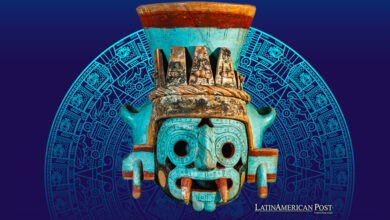Slavery is not over: This is how this problematic is lived in 2018
It is estimated that there are about 46 million slaves in the world, many of these are farmers, miners, or factory workers

Several decades ago, slavery was abolished in the world; however, modern exploitation continues in all corners of the planet. It is estimated that at least 46 million people work as slaves in the new millennium, where although there is an apparent freedom over the body, threats and abuse of power prevail.
Leer en español: La esclavitud no ha terminado: Así se vive este flagelo en 2018
According to the latest report of the Global Index of Slavery (IGE), prepared by the Walk Free Foundation, the exploitation of human beings today is four times bigger than the more than 11,000 Africans who were sold to America between the sixteenth and seventeenth centuries, taking IGNORE INTO account that by the year 1500 the total population on the planet was approximately 460 million inhabitants, according to the Museum of Natural History in New York.
The slavery of the 21st century is represented by the dependence of one individual on another, which exercises his power in a violent or threatening manner, thus preventing the other person from choosing whether or not to reject a certain situation. As defined by the IGE, "vulnerability to modern slavery is affected by a complex interaction of factors related to the presence or absence of protection and respect for human rights, physical protection and security, access to basic needs such as food, water or medical care, and with cases of migration, displacement and conflict".
Read also: Brazil: in the haciendas, slavery is disguised as religion
Where does slavery prevail?
India, China, Pakistan, Uzbekistan, the Congo, and North Korea are some of the countries where slavery is most concentrated.
- Due to its population of 25 million people, it is estimated that North Korea is the place in the world where the largest slave population is concentrated. According to figures collected by the report, 4.37% of citizens (close to one million 100 thousand) are forced to perform work without payment or with minimal remuneration. However, this number could be higher, since the secrecy of Kim Jong-Un's regime does not allow the collection of exact statistics.
- The second country with the largest number of slaves, according to the IGE report, is Uzbekistan with 3.97% of the total population enslaved. There, the authorities force farmers to collect large quantities of cotton and sell it to the government for small fractions of money.
- India is considered the nation with the most modern slavery in the world where about 19 million people work every day as slaves. However, due to its large population it occupies fourth place in the IGE list with 1.40% of the enslaved population. The growing presence of middle class families has triggered an increase in the hiring of domestic service. These tasks are carried out mostly by women and girls, who are forced to work for long hours, paltry payments and mistreatment by their employers.
- 1.13% of the total population of the Democratic Republic of the Congo are considered modern slaves and are forced to work in cobalt mines under risk conditions and for long hours. According to Unicef, it is estimated that fewer than 40,000 children are involved in the extraction of cobalt in the Congo. Many of these are only 7 years old, and they work for 12 continuous hours underground in unhealthy conditions, breathing toxic substances that generate terminal illnesses and all in exchange for one and two dollars a day.
- In China, there are more than 3 million slaves who work in construction, mining, domestic service and sex work.
- In Pakistan, 1.13% of the population 'sells' their lives to people with money to save a sick relative and buy medicines. These individuals are forced to work for long hours and the little payment received by half is in the hands of the wealthy "savior".
You may be interested: Latin America: The region with the most homicides in the world
No obvious solution
In order to minimize labor slavery, mainly child exploitation, the Organization for Economic Cooperation and Development established in 2017 a set of actions to identify and mitigate the scourge. Among the solutions is the intervention of independent auditors, inspection of supply chains and support for education programs.
Nations such as the United States and the United Kingdom have put in place legislative measures to eradicate forced labor in the world. Nonetheless, and paradoxically, slavery in developing countries is largely driven by supply chains and the production of products that end up in the hands of consumers in developed nations.
Latin American Post | Krishna Jaramillo
Translated from “La esclavitud no ha terminado: Así se vive este flagelo en 2018”





